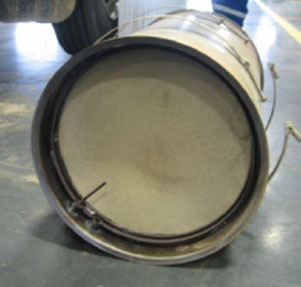Posted by admin , on Jan, 2017

Beginning back in the year 2008, diesel vehicles were required to be equipped with diesel particulate filters (DPF’s). What these filters do is capture the soot before your exhaust is emitted into the atmosphere. These filters are typically made of silicon carbide, cordierite, or ceramic and are what are called wall flow type filters. Amazingly, these filters can keep between 85% to 100% of the DPF’s from leaving your exhaust. It has been said that you should be able to place a white cloth over your exhaust and have it remain white.
DPF Maintenance
Maintenance of diesel particulate filters is simple and straightforward. As you run your vehicle, soot and particles build up in the filter and that is when it is time for a DPF regen treatment in Minnesota. In general, a warning light will let you know when it is time to burn off the soot. This process is what is called regeneration. At other times, cleaning the filter will be required as well.
DPF Regeneration
There are three types of DPF regeneration treatments; passive, active and forced:
- In the case of passive regeneration, the cleaning process happens automatically. When the temperature of the exhaust becomes hot enough, the built-up particulates in the filter turn to ash. If you climb many hills, your vehicle should have no difficulty passively regenerating because under these terms or conditions, the soot will burn off as fast as it forms.
- Active regeneration is required particularly for vehicles who spend more time idling or driving through slower traffic. Typically, it involves some type of catalyst within the engine that burns out the soot.
- At times a forced regeneration may be required and if you continue to operate your vehicle, you may not only ruin the DPF, but also cost other serious damage to your vehicle.
If you have any questions or concerns regarding DPF regen treatments in Minnesota, do not hesitate to contact JKG Fuel Solutions.


